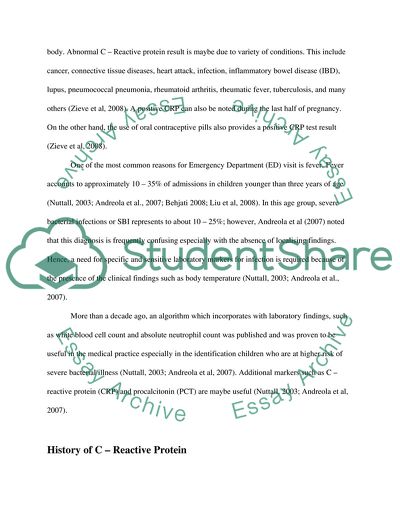Cite this document
(“A Normal C Reactive Protein and Significant Bacterial Infection in Literature review”, n.d.)
A Normal C Reactive Protein and Significant Bacterial Infection in Literature review. Retrieved from https://studentshare.org/health-sciences-medicine/1720925-in-children-with-fever-does-a-normal-c-reactive-protein-crp-safely-exclude-significant-bacterial-infectionsepsis
A Normal C Reactive Protein and Significant Bacterial Infection in Literature review. Retrieved from https://studentshare.org/health-sciences-medicine/1720925-in-children-with-fever-does-a-normal-c-reactive-protein-crp-safely-exclude-significant-bacterial-infectionsepsis
(A Normal C Reactive Protein and Significant Bacterial Infection in Literature Review)
A Normal C Reactive Protein and Significant Bacterial Infection in Literature Review. https://studentshare.org/health-sciences-medicine/1720925-in-children-with-fever-does-a-normal-c-reactive-protein-crp-safely-exclude-significant-bacterial-infectionsepsis.
A Normal C Reactive Protein and Significant Bacterial Infection in Literature Review. https://studentshare.org/health-sciences-medicine/1720925-in-children-with-fever-does-a-normal-c-reactive-protein-crp-safely-exclude-significant-bacterial-infectionsepsis.
“A Normal C Reactive Protein and Significant Bacterial Infection in Literature Review”, n.d. https://studentshare.org/health-sciences-medicine/1720925-in-children-with-fever-does-a-normal-c-reactive-protein-crp-safely-exclude-significant-bacterial-infectionsepsis.


